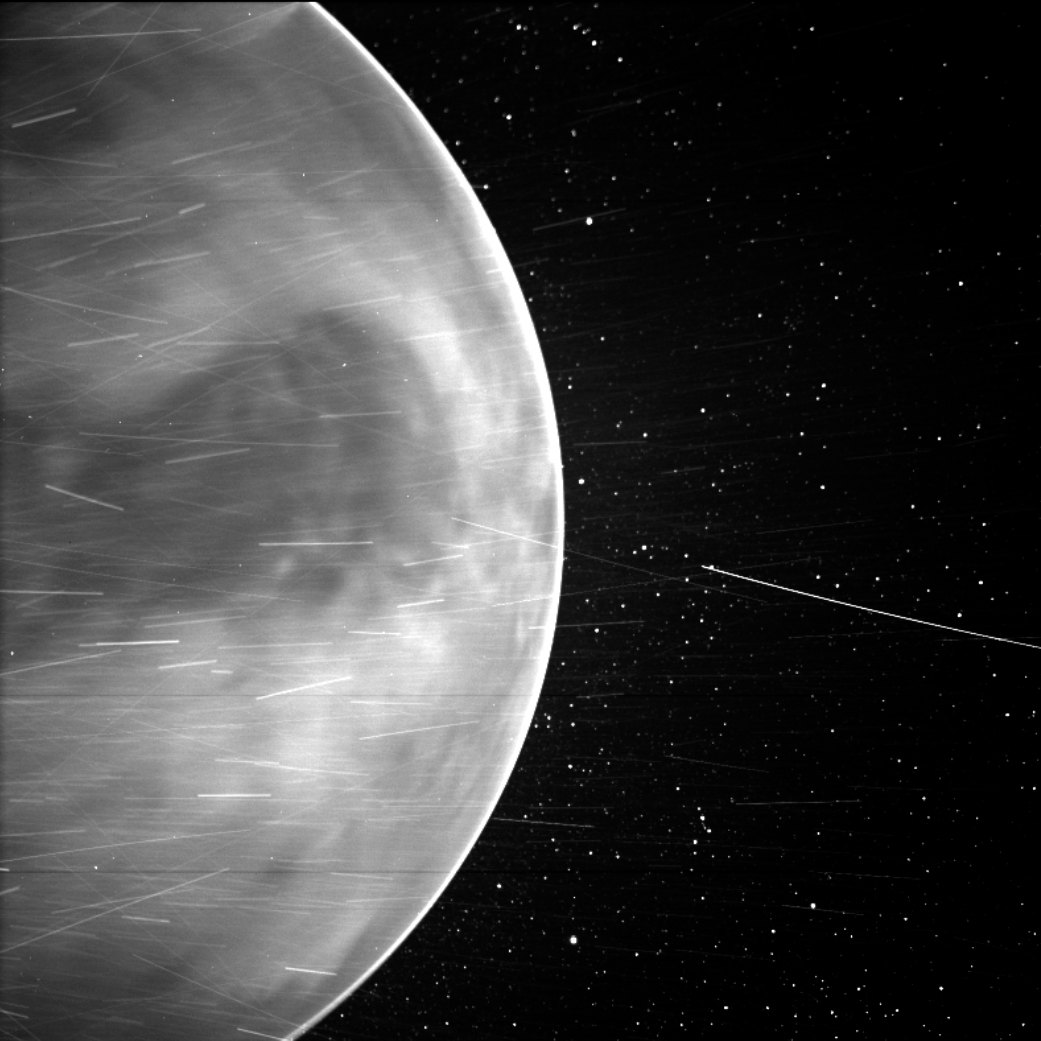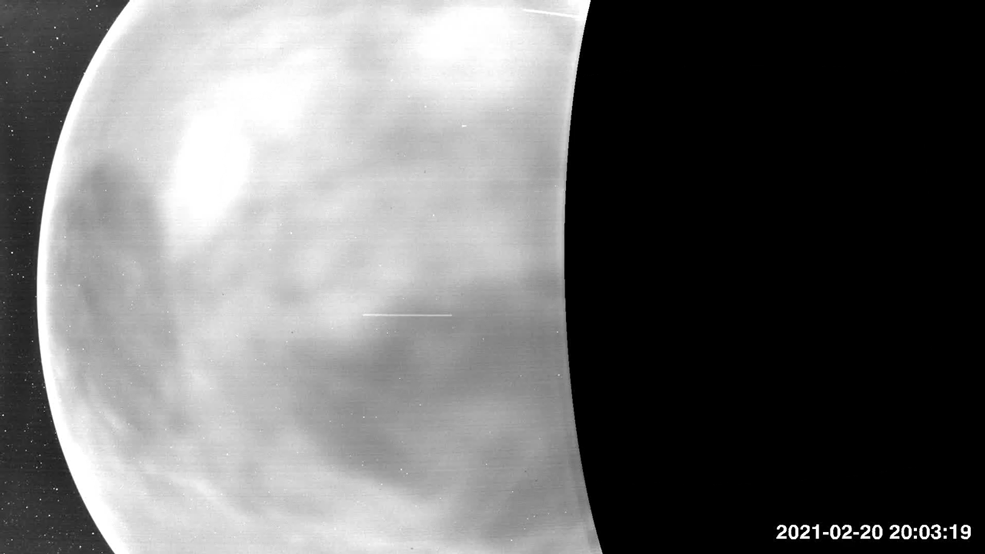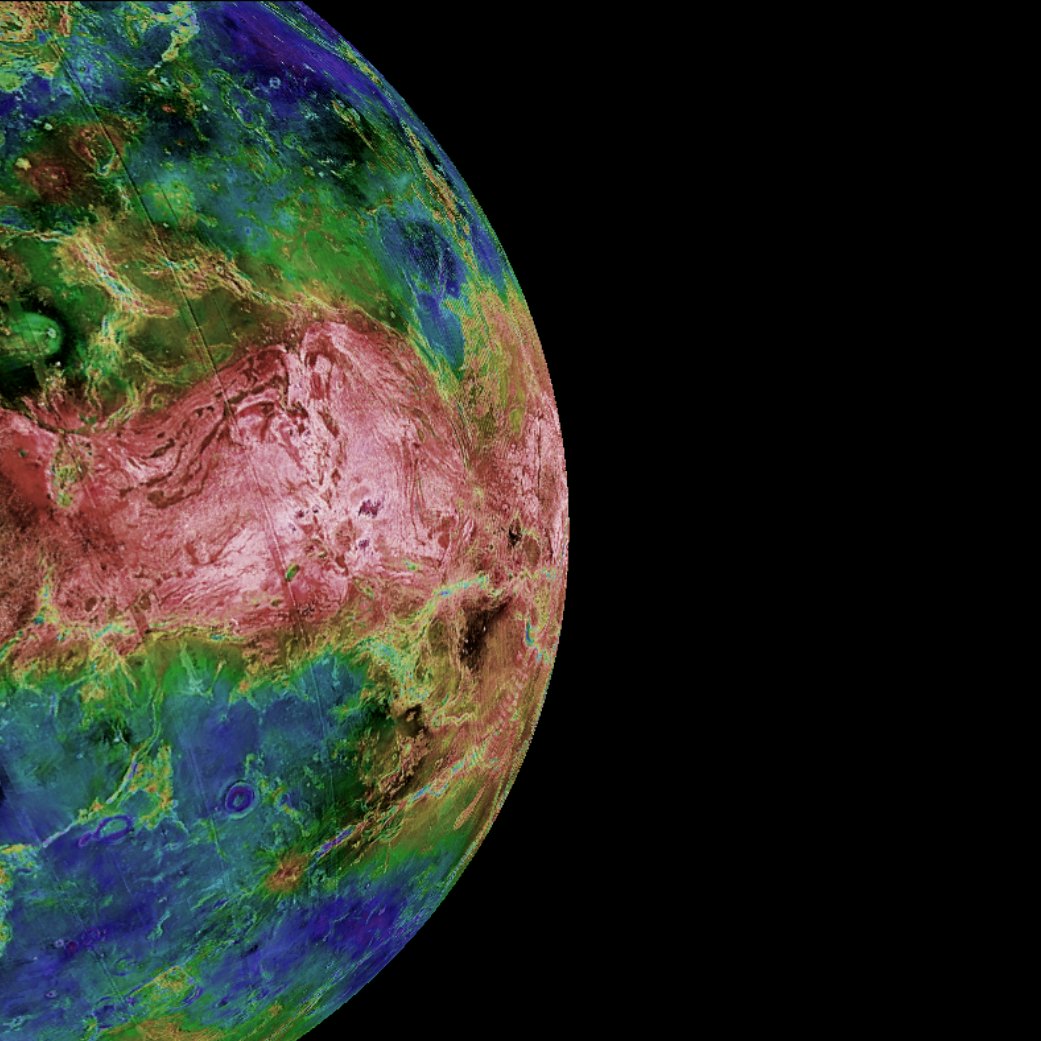
The shroud of thick clouds veiling the surface of Venus has been peeled back — thanks to the NASA Parker Solar Probe. The stunning observations reveal a planet marked with continents, flat expanses, and ranging highlands. These features have never been seen before in the visible spectrum of light, a feat achieved only through a series of stealthy flybys of the planet’s nightside.
What’s new — In a paper published Wednesday in the journal Geophysical Physical Letters, NASA scientists and others linked to the Parker Solar Probe mission explain how they managed to catch such unprecedented glimpses of Venus — and what these stolen glances reveal.
“Venus is the third brightest thing in the sky, but until recently we have not had much information on what the surface looked like because our view of it is blocked by a thick atmosphere,” says Brian Wood in a statement. Wood is the lead author on the new study and physicist at the Naval Research Laboratory in Washington, D.C.
“Now, we finally are seeing the surface in visible wavelengths for the first time from space.”
The images reveal a diverse topography — highlands and lowlands, continental masses, and more curious geographical features ripe for exploration. The data also help confirm Venus is 735 Kelvin at its surface — 863.33 Fahrenheit. Incredibly, the scientists also report emissions similar to an Earthly wonder: The aurora.

How they did it — The surface of Venus has been imaged before — but in other wavelengths of light than those the human eye can see. Typically, Venus appears in visible light as a pearl, mysteriously featureless and utterly opaque. The lack of any telling details about what lurks on the surface of the planet is to do with the thick, sulfuric acid clouds and carbon dioxide-rich atmosphere that blanket the planet in a toxic haze.
Only a little red light manages to escape these clouds — but it is typically lost because the Sun’s light bounces off the thick Venetian clouds, drowning the red light in noise. At night, Venus is still so hot, there is a faint glow radiating from it, but no Sun for this red light to compete with. By imaging the planet during its nighttime, the Parker Solar Probe was able to see more detail of the surface of Venus in the visible spectrum from space than any mission has ever achieved before.
“The surface of Venus, even on the nightside, is about 860 degrees,” Wood says in the statement. “It’s so hot that the rocky surface of Venus is visibly glowing, like a piece of iron pulled from a forge.”

The Parker Solar Probe is supposed to study the Sun and WISPR was designed to observe the solar atmosphere and wind — a capability that can ostensibly be applied to clouds like those shrouding Venus. Except WISPR saw further to the surface of the planet itself. The probe took the images during two flybys, made on its way to study the Sun, on July 11, 2020, and February 20, 2021. The images were taken with the Wide-Field Imager for Parker Solar Probe instrument.
“The images and video just blew me away,” Wood says in the statement.
Why it matters — Revealing the surface of Venus in a new light is not only a breakthrough moment for space science — it also gives scientists crucial details about our neighboring planet. These data can help inform future science missions to explore Venus and help us understand the planet’s evolution. There’s a theory that Venus was once an analog to Earth — a foreboding example of a planet that was once potentially habitable and now is smothered by its own greenhouse gas effect.
The images also confirm past observations made using radar and infrared instruments, showing regions like the Aphrodite Terra to the human eye without the help of image processing. For example, here is an image of Venus by WISPR, showing a highland region in darker gray near the center of the orb:

And here is the same view, but this time the image was taken by NASA’s previous Magellan mission. Here, the highland region is shown in false color. Together, these observations reveal the planet’s diverse topography:

What’s next — These new images set the stage for two huge endeavors: VERITAS and DAVINCI. These missions, scheduled to be part of NASA’s next decade of scientific exploration, will observe Venus alongside the ESA’s EnVision mission. Together, the three will uncover new details about how Venus evolved, help explain why it has such a thick and noxious atmosphere.
“By studying the surface and atmosphere of Venus, we hope the upcoming missions will help scientists understand the evolution of Venus and what was responsible for making Venus inhospitable today,” says Lori Glaze, director of the Planetary Science Division at NASA, in the statement.
In the meantime, the Parker Solar Probe is moving on. Its next two flybys of Venus will not offer a similarly brilliant opportunity to view Venus’ nightside, but it will have a final chance to study the planet’s surface on its seventh loop past the planet in November 2024. We can’t wait to see it.







